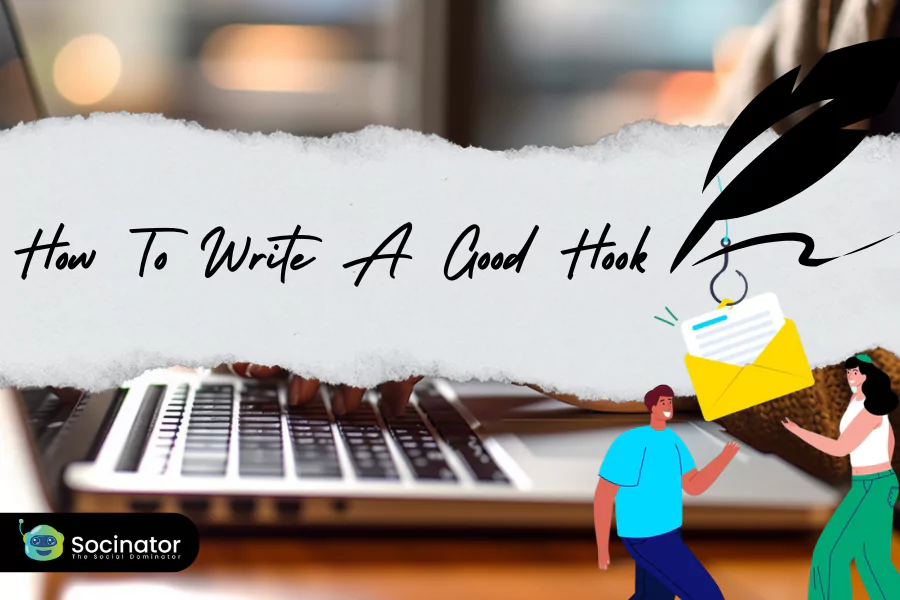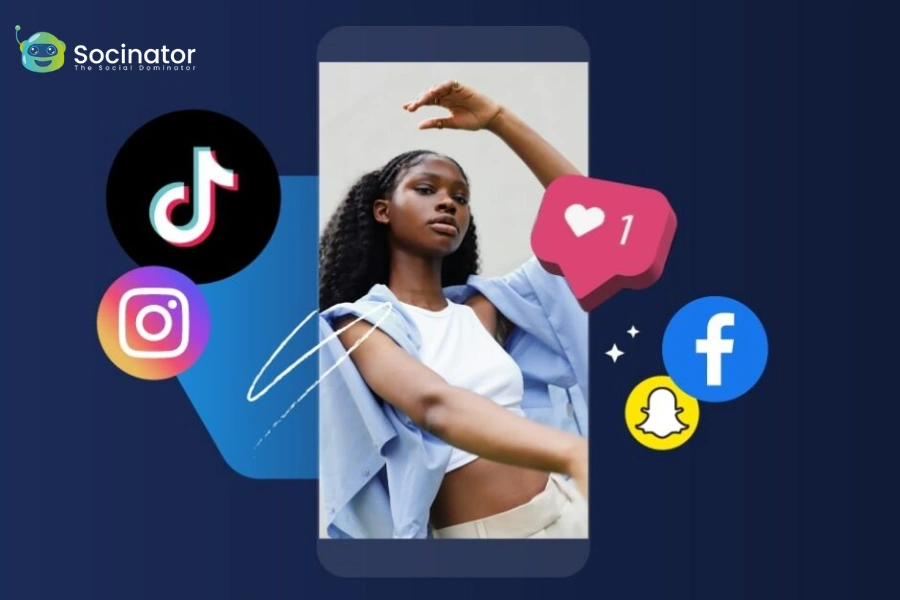You’ve felt it before, that moment when a headline grabs your attention and you just have to click. That’s the power of learning how to write a good hook. It’s not about tricking readers; it’s about crafting something so compelling they want to engage.
In today’s content-saturated world, skills like how to write a good hook separate the ignored from the irresistible. The difference isn’t quality, it’s that split-second decision we make to keep reading or keep scrolling. Mastering how to make a good hook means understanding what makes people pause, lean in, and, most importantly, care.
The truth? Most content fails at the starting line. Not because the ideas are weak, but because they don’t answer the reader’s silent question: “Why should I spend my time on this?” That’s what we’ll change.
Let’s start with the Psychology of what makes a hook tick, beyond just sounding catchy.
Listen To The Podcast Now
The Psychology Behind Effective Hooks

Before diving into how to make a good hook for social media content creation and writing, let us try to understand its psychology.
A powerful opening acts like a mental handshake – it establishes a connection before the real conversation begins. When learning how to write a good hook, remember that our brains are wired to respond to certain triggers. Even tools like the Writepaper AI writer highlight how the most compelling openings typically create either curiosity, emotional resonance, or a vivid mental image that pulls readers in immediately. Here are a few examples:
- Instant recognition (“She described my exact morning routine”)
- Pleasant surprise (“I never thought about it that way”)
- Intellectual curiosity (“I need to know the answer to that”)
- Emotional resonance (“That story reminded me of…”)
The magic happens when these elements combine naturally. You’re not just learning how to write a good hook – you’re learning to start meaningful dialogues
With the psychology in mind, let’s get tactical. Here are five proven techniques you can start using immediately.
Five Proven Hook Techniques That Convert Readers
Let’s break down how to write a good hook, with five simple strategies that grab attention from the first line.
1. The Revelatory Statistic Approach
Understanding how to write a good hook often begins with data. But not just any numbers – the ones that reframe common knowledge.
Weak: “Content marketing is growing.”
Strong: “83% of marketers prioritize content, yet only 28% document their strategy – this gap explains why most efforts fail.”
The difference? The second version makes the reader lean in. It presents data they can’t immediately explain, creating that itch to keep reading.
2. The Thought-Provoking Question Method
When exploring how to write a good hook, questions are powerful tools when used correctly. They should:
- Relate to a genuine pain point
- Challenge conventional thinking
- Leave room for your content to provide answers
Weak: “Want better engagement?”
Strong: “What if your audience playbook is outdated?”
3. The Storytelling Gateway
Our brains process stories differently from facts. A well-crafted narrative hook:
- Establishes immediate relatability
- Creates emotional investment
- Sets up anticipation for resolution
Story Hooks Examples :
“My first 100 blog posts got crickets. Then I discovered one formatting trick that changed everything.”
“My toddler’s tantrums made me cry daily. Then a child psychologist taught me this 3-word response – now we both stay calm.”
4. The Perspective Flip Technique
Learning how to create a good hook sometimes means turning expectations upside down.
Weak: “SEO matters for visibility”
Strong: “Last Year’s SEO Tricks Could Now Tank Your Rankings – Here’s What Actually Works in 2025“
This approach works because it promises new information while validating the reader’s potential frustration.
5. The Humor Connection
When appropriate, humor can be the most memorable way to demonstrate how to write a good hook. The key is keeping it:
- Relevant to your topic
- Authentic to your brand voice
- Universally relatable
Example: “They told me ‘just be consistent’ with content. Now I consistently disappoint my audience every Tuesday at 3 PM.”
Next, let’s see how your hook should adapt depending on where you’re publishing and the hook for social media essays. One size does not fit all.
How To Write Platform-Specific Hook
The secret to how to write a good hook lies in understanding that each social platform speaks its own language. What makes users pause on Instagram won’t necessarily work on LinkedIn. Your Twitter audience also expects something completely different from your Facebook followers. Let’s break down how to write a good hook that actually works and bring social media interaction across today’s most important platforms.
Twitter/X: Punchy and Provocative
On Twitter, you’re competing with the world’s shortest attention spans. The most effective hooks here are like perfectly crafted haikus – every word must earn its place. How to write a good hook for Twitter means mastering the art of saying something profound in very few characters.
Here’s how to write a good hook on twitter:
- Start mid-conversation (“Here’s why everything you know about virality is wrong…”)
- Use numbers strategically (“3 sentences that got me 10K retweets”)
- Create instant curiosity (“Nobody talks about this dark side of going viral”)
Example that works: “Spent 6 months building my ‘perfect’ Twitter strategy. Then I tried this instead – engagement tripled overnight.”
Instagram: Visual Storytelling Meets Captions
Instagram hooks need to work double duty – they must complement your visual while standing strong on their own. Learning how to write a good hook for Instagram means approaching it like a magazine editor, crafting the perfect cover line that instantly grabs attention.
Successful Instagram hooks often:
- Speak directly to the viewer (“You’re making this one lighting mistake”)
- Promise transformation (“Swipe to see my 30-day glow up”)
- Use conversational questions (“Would you try this trend?”)
Example that works: “The photo hack professionals don’t want you to know (it takes 2 seconds)”
Facebook: Emotional and Relatable
Facebook audiences respond best to hooks that tap into shared experiences or emotions. How to write a good hook for Facebook means finding that sweet spot between personal and universal.
Winning Facebook hooks often:
- Start with “Remember when…” nostalgia
- Use self-deprecating humor
- Highlight community (“Tag someone who needs to see this”)
Example that works: “My 5-year-old taught me more about marketing than my MBA ever did.”
LinkedIn: The Professional Hook
LinkedIn hooks walk a tightrope between being insightful yet approachable. How to write a good hook for LinkedIn means offering career value while avoiding corporate jargon.
Effective LinkedIn hooks often:
- Challenge industry norms
- Share specific lessons
- Offer unexpected connections (“What bartending taught me about sales”)
Example that works: “The resume advice that’s actually hurting your job search”
Email: The Subject Line Hook
Your email hook has one job: to get the email opened. How to write a good hook for email means understanding that you’re not just competing with other emails, but with everything in someone’s busy day.
High-performing email hooks often:
- Create curiosity gaps
- Offer clear benefits
- Use personalized triggers (“[First Name], you’ll want to see this”)
Example that works: “The one question that changed how I network (template inside)”
Also Read
8 Tips For Writing Engaging Social Media Interaction Posts
Creative and Tested Social Media Content Creation Strategies for 2024
The Golden Rule Of Platform Hooks
While each platform has its own personality, how to write a catchy hook always comes back to one universal truth: it should feel like the start of a conversation your ideal audience wants to have. The best hooks don’t just grab attention – they make a promise that your content keeps.
Test different approaches, watch what resonates, and remember that how to write a good hook is a skill that gets sharper with practice. Your first sentence isn’t just an introduction – it’s an invitation to a conversation worth having.
How To Know If Your Hook Works
The only real test is seeing how people respond. Try writing three different openings for the same piece of content and see which one:
- Gets more people to keep reading
- Leads to more shares or comments
- Feels most authentic to your voice
Over time, you’ll develop an instinct for what resonates with your audience.
How To Test If Your Hook Works
1. Create Multiple Hook Variations
The most effective way to learn how to write a good hook is through experimentation. Instead of settling on one opening line, draft 3-4 different versions for the same piece of content.
For example:
- A shocking statistic
- A thought-provoking question
- A relatable short story
- A bold, contrarian statement
This gives you real data on what resonates best with your audience.
2. Measure Reader Engagement
Once you publish, track key metrics to see which hook performs best:
- Scroll depth (Are readers staying past the first paragraph?)
- Time spent on page (Longer reads = stronger engagement)
- Shares & comments (Does it spark discussion?)
- Click-through rates (For emails or social posts)
Tools like Google Analytics, heatmaps, or native platform insights (LinkedIn, Twitter, etc.) can help.
3. Listen to Audience Feedback
Beyond numbers, pay attention to qualitative signals:
- Are people mentioning your opener when they share?
- Do comments reference your hook? (“I clicked because of that surprising stat!”)
- Does it feel natural to your brand voice?
A hook might get clicks, but feel gimmicky; long-term, authenticity matters.
4. Refine & Repeat
Learning how to write a good hook is an ongoing process. Even if one style works today, audience preferences shift. Re-test periodically by:
- Trying new formats (e.g., humor vs. emotional hooks)
- Updating old hooks that feel dated
- Observing competitors’ best-performing openings
The goal isn’t just one viral hook, it’s developing an instinct for what makes your audience pause and read.
Testing your hook is easier when you’re equipped with the right tools. With social media automation tools like Socinator, not only can you automate posts, but also track engagement metrics and fine-tune your hook strategy, all from one centralized dashboard.
How Socinator Can Ease Your Social Media Management?
Managing multiple social media accounts can get overwhelming, especially when you’re juggling content creation, audience engagement, and campaign performance all at once. That’s where Socinator, a social media management software, steps in.
Socinator helps you simplify, automate, and scale your social media efforts so you can focus on what truly matters: building genuine connections and growing your brand. With powerful features tailored to reduce your manual workload, Socinator enables you to stay consistent, responsive, and data-driven without spending hours online.
Here’s how Socinator allows you to take full control of your social media game:
Activity Statistics & Reports
Socinator helps you stay informed with in-depth performance reports of your profile activity, enabling smarter decisions for your upcoming campaigns.
Auto Send / Accept / Cancel Connection Requests
Socinator enables you to simplify audience growth by automatically sending, accepting, or canceling connection requests, saving you time while targeting the right people.
Auto Likes & Comments
Socinator allows you to engage with your audience effortlessly by automating likes and comments, so your profile stays active and connected without constant manual work.
Auto Like Pages or Profiles
Socinator helps you connect with relevant profiles and pages in your niche by automating the liking process, keeping your interactions consistent and strategic.
Schedule Posts & Automate Publishing from RSS
With Socinator, you can maintain a regular posting rhythm by scheduling content in advance or publishing directly from RSS feeds, giving you total control and flexibility.
Auto Share Posts
Socinator allows you to automatically share posts to enhance content visibility and boost traffic, helping you stay top-of-mind in your audience’s feed.
Auto Wish on Life Events
Socinator helps you keep up with important moments by sending automated wishes for events like birthdays or milestones, making your profile feel thoughtful and engaged.
Broadcast Messages
It enables you to send out broadcast messages and announcements with ease, perfect for reaching your entire audience through direct messaging in just a few clicks.
Auto Reply to New Messages
Socinator allows you to stay responsive 24/7 with automated replies to new messages, ensuring that every query is acknowledged even when you’re away.
The Takeaway
Hooks writing isn’t about following formulas, it’s about understanding what makes your readers tick. The best openings feel like the start of an interesting conversation, not a sales pitch.
Next time you write something, pause after your first sentence and ask: “Would this make me want to keep reading if I saw it somewhere else?” If the answer isn’t a clear yes, it’s worth another try.
After all, in a world full of content, the best hook isn’t the one that shouts loudest, it’s the one that speaks directly to the reader in a way they can’t ignore, just like effective social media marketing software helps you to maintain consistency and deliver your message, at the right time.
Frequently Asked Questions
1. What is the difference between a headline and a hook?
A headline grabs initial attention, while a hook keeps that attention and encourages further engagement. Think of the headline as the door, and the hook as the inviting conversation just inside.
2. Can a hook be more than one sentence?
Yes, especially in long-form content. While many hooks are single, punchy lines, a multi-sentence hook can work well when building narrative, suspense, or emotional resonance.
3. How long should a good hook be?
A good hook doesn’t have to be long, it just needs to be compelling. It could be a single punchy sentence, a shocking fact, or even a provocative question. When learning how to start a good hook, focus on impact, not length.









